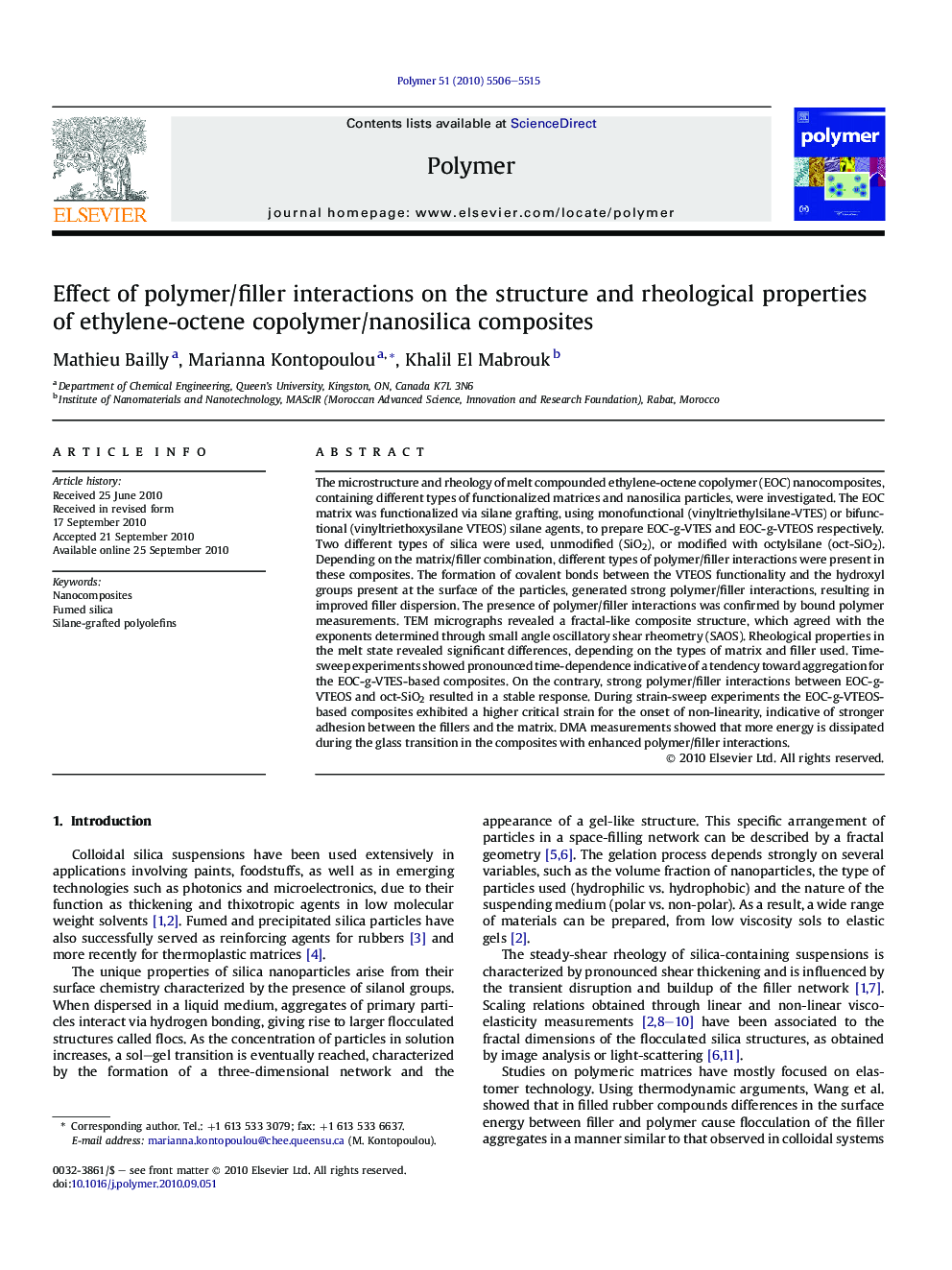| کد مقاله | کد نشریه | سال انتشار | مقاله انگلیسی | نسخه تمام متن |
|---|---|---|---|---|
| 5184611 | 1381052 | 2010 | 10 صفحه PDF | دانلود رایگان |

The microstructure and rheology of melt compounded ethylene-octene copolymer (EOC) nanocomposites, containing different types of functionalized matrices and nanosilica particles, were investigated. The EOC matrix was functionalized via silane grafting, using monofunctional (vinyltriethylsilane-VTES) or bifunctional (vinyltriethoxysilane VTEOS) silane agents, to prepare EOC-g-VTES and EOC-g-VTEOS respectively. Two different types of silica were used, unmodified (SiO2), or modified with octylsilane (oct-SiO2). Depending on the matrix/filler combination, different types of polymer/filler interactions were present in these composites. The formation of covalent bonds between the VTEOS functionality and the hydroxyl groups present at the surface of the particles, generated strong polymer/filler interactions, resulting in improved filler dispersion. The presence of polymer/filler interactions was confirmed by bound polymer measurements. TEM micrographs revealed a fractal-like composite structure, which agreed with the exponents determined through small angle oscillatory shear rheometry (SAOS). Rheological properties in the melt state revealed significant differences, depending on the types of matrix and filler used. Time-sweep experiments showed pronounced time-dependence indicative of a tendency toward aggregation for the EOC-g-VTES-based composites. On the contrary, strong polymer/filler interactions between EOC-g-VTEOS and oct-SiO2 resulted in a stable response. During strain-sweep experiments the EOC-g-VTEOS-based composites exhibited a higher critical strain for the onset of non-linearity, indicative of stronger adhesion between the fillers and the matrix. DMA measurements showed that more energy is dissipated during the glass transition in the composites with enhanced polymer/filler interactions.
Journal: Polymer - Volume 51, Issue 23, 29 October 2010, Pages 5506-5515